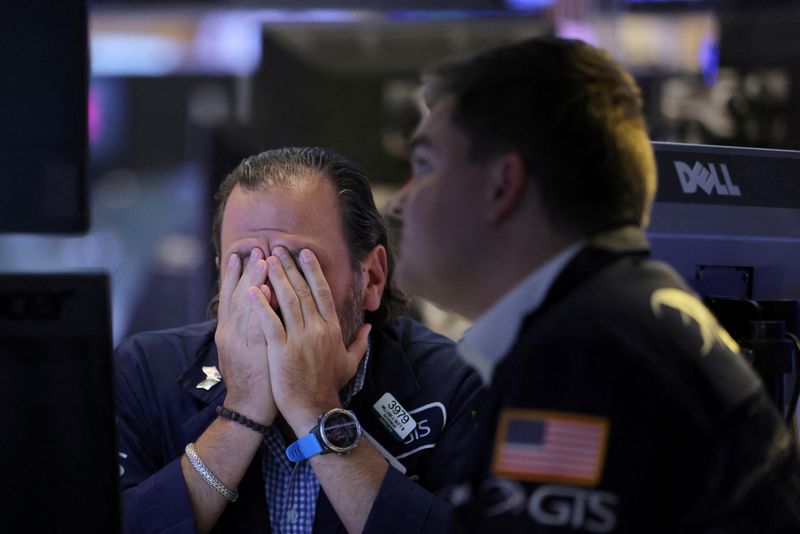By Saqib Iqbal Ahmed
NEW YORK (Reuters) - Options trading activity does not yet hint at a bottom in U.S. stocks, Barclays (LON:BARC) derivatives strategists said on Tuesday, rebutting speculation among some investors that a record surge in put option trading volumes suggested the market may be nearing a reversal.
With the S&P 500 marking a fresh bear market low on Tuesday, down 24% for the year, traders and investors are searching for clues as to when the market may bottom out.
Trading in put contracts - typically used to protect against market losses - has surged, with a record 33.93 million put contracts changing hands on Friday alone. That left traders who view extreme put-option activity as a sign of investor pessimism peaking wondering if the selloff is done.
That's not the case, according to Barclays.
"Contrary to popular belief, equity investors did not hastily pile into protection buying," Barclays equity derivatives strategist Stefano Pascale said in a note on Tuesday.
"But unlike the previous market lows in June, they also more patiently refrained from rushing to monetize existing hedges, suggesting they expect the worst is yet to come."
But while the trading activity suggests there is still fear in the market, it has not risen to levels associated with past market bottoms.
Put contracts give the buyer the right to sell securities at a fixed price in the future and investors often buy them as a way to insure against potential losses.
Surging volumes of puts does not always point to extreme fear, however, since some of the volume may be due to investors selling these contracts in the belief market losses are likely to be limited.
"We don't see evidence of record equity protection buying when selling activity is also properly accounted for," Pascale said.

For instance, in options on ETFs, puts selling reached a four-year record, according a Barclays analysis, signaling peak fear is still distant.
On Tuesday, the Cboe Volatility Index, known as Wall Street's fear gauge, was at a 3-month high of 33, but far below peaks hit during past bear market lows.